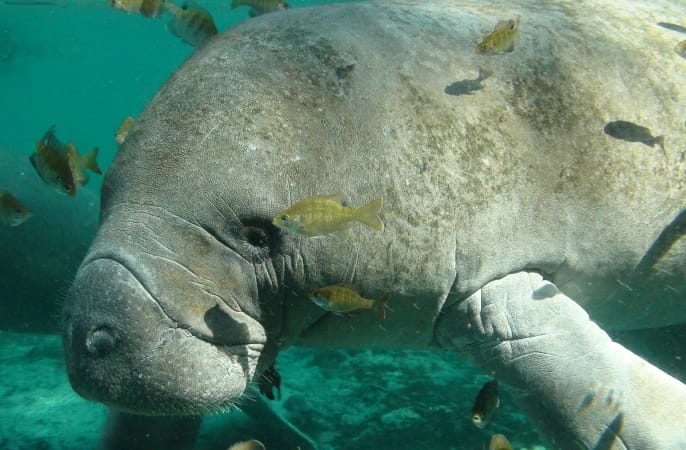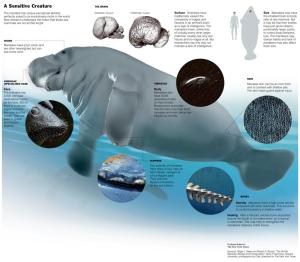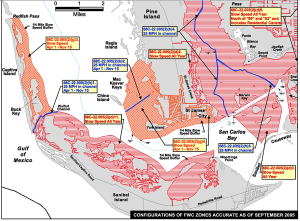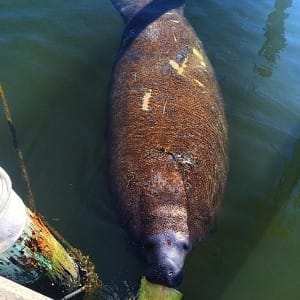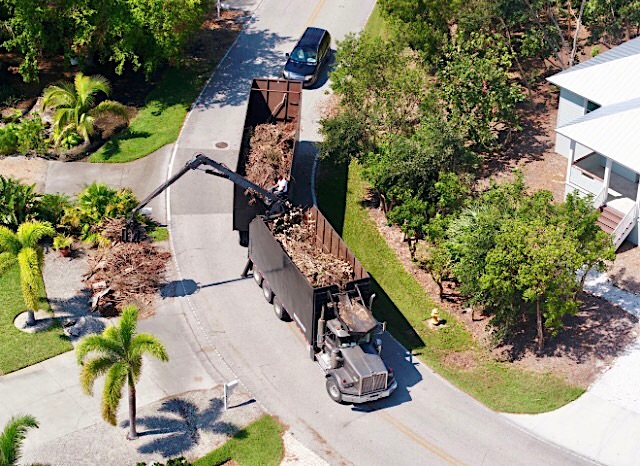Manatee Season Runs November 15 – March 31; Manatees Moving To Warmer Water.
Learn about Florida Manatees at a free program every Sunday at 11 AM and Wednesday at 1 PM at “Ding” Darling!
You also still have a good chance of still seeing Manatees this time of year in and around Sanibel and Captiva Islands. Manatees are often near the docks at Jensen’s Marina, McCarthy’s Marina and the South Seas Resort Marina through the winter months, but Manatees are generally moving inshore at this time of year.
As the water temperature starts to drop toward 68 degrees, Manatees move to warmer water, moving toward the rivers and the warmth of the power plants and other outlets.
“Manatees will be swimming up and down the Caloosahatchee River for the next few months — making their way from the warm-water refuge created by the Florida Power & Light plant on the Orange River to coastal feeding grounds near the mouth of the river, Pine Island Sound and San Carlos Bay.” news-press.com
Here is a nice overview of the Manatee, all information courtesy of FWC.
Manatee Appearance:
Adult manatees are typically 9-10 feet long and weigh around 1,000 pounds. However, they may grow to over 13 feet and weigh more than 3,500 pounds. Adults are gray in color, with very fine hairs sparsely distributed over much of the body. Stiff whiskers grow around the face and lips. Algae growing on the dermis may make them appear green or brown. They have two fore limbs, usually with 3 or 4 nails, that they use for slow movements and to grasp vegetation while eating. They have a rounded flattened tail for swimming. The nostrils, located on the upper surface of the snout, tightly close with valves when underwater. Their eyes are small and have a membrane that can be drawn over them for protection. The ear openings, located just behind the eyes, are small and lack external lobes. They have a flexible upper lip that is used to draw food into the mouth.
Manatee Habitat:
The manatee inhabits coastal waters and rivers. They can easily move between fresh, brackish and marine habitats.
The West Indian manatee’s range is from the southern United States throughout the Caribbean Islands, Central America, and to northern South America. In the United States, a sub-species—the Florida manatee (Trichechus manatus latirostris), lives in many Florida waterways or travels up the eastern coastline into Georgia, the Carolinas, and as far north as Massachusetts during warm months. In the Gulf, Florida manatees are occasionally sighted as far west as Texas. During cold months these manatees migrate to the warm waters of south Florida, or find a source of warm water such as artesian springs or industrial discharges.
Manatee Behavior:
Manatees are large, aquatic mammals that eat plants. Also known as “sea cows,” these herbivores usually spend up to eight hours a day grazing on seagrasses and other aquatic plants. A manatee can consume up to 10 percent of its body weight in aquatic vegetation daily. The manatee uses its muscular lips to grab and tear plants much like an elephant uses its trunk to pick up items. Manatees consume freshwater and marine plants of all kinds.
A manatee uses its flippers and tail to steer itself through the water and moves its tail up and down to propel itself forward. Manatees are quite agile in the water. They can swim upside down, roll, do somersaults or move vertically in the water.
Like other mammals, manatees breathe air. They must surface approximately every five minutes to breathe, but can hold their breath for as long as twenty minutes when resting. The manatee’s nose is usually the only part of its body that comes out of the water when it breathes.
Manatees rest from 2 to 12 hours a day either suspended near the water’s surface or lying on the bottom, usually for several hours at a time.
Manatees reach sexual maturity in 3-5 years (females) and 5-7 years (males) and may live over 60 years in controlled environments. Gestation is approximately 13 months and usually one calf is born. The calf may stay with the cow for up to 2 years. Male manatees (bulls) are not part of the family unit. Bulls will leave a female alone after her breeding period is over. Of the wild manatees that reach adulthood, only about half are expected to survive into their early 20s.
Manatee Anatomy facts and trivia:
- A manatee can move each side of its lip pads independently. This flexibility allows the manatee to “grab” aquatic plants and draw them into its mouth.
- Manatees do not have eyelashes. Their eye muscles close in a circular motion, much like an aperture on a camera. They have a lid-like membrane (called a nictitating membrane) that closes over their eyes for protection when they are under water.
- Manatees can hear very well despite the absence of external ear lobes.
- A manatee’s heart beats at a rate of 50 to 60 beats a minute. The heart rate slows down to 30 beats a minute during a long dive.
- Manatees have no “biting” teeth, only “grinding” teeth. A manatee’s teeth (all molars) are constantly being replaced. New teeth come in at the back of the jaw and move forward about a centimeter a month. The front molars eventually fall out and are replaced by the teeth behind them. This tooth replacement is an adaptation to the manatee’s diet, as it consumes plants that often hold sand that can wear down its teeth.
- Manatees have only six cervical (neck) vertebrae. Most other mammals, including giraffes, have seven. As a result, manatees cannot turn their heads sideways; they must turn their whole body around to look behind them.
- The manatee’s rib bones are solid, there is no marrow. They make red blood cells in their sternum where marrow is found.
- The manatee has pelvic bones, but they are not attached to its skeletal frame and are fairly small. They are remnants of a time when manatees lived on land. The bones are found in a cartilage tissue area of the body in the vicinity of the reproductive organs and the urinary bladder. The bones are soft when the manatee is young and later harden as they mature.
- Other remnant bones found in the manatee are the hyoid bones located near the neck region. These bones are similar to the Adam’s apple in humans. Today, there is no known use of these bones in the manatee.
- The manatee’s lungs lie along its backbone instead of along its rib cage as is found in most mammals. The lungs are long (1 meter or more in adults), wide (20 cm), and thin (5 cm or less). Besides breathing, the lungs help the manatee with buoyancy control.
- The bones in a manatee’s flipper are similar to a human hand. The jointed “finger bones” of the flipper help the manatee move through the water, bring food to its mouth, and hold objects. Three or four nails are found at the end of each flipper.
Source: FWC.
“Ding” Darling fun manatee video.

